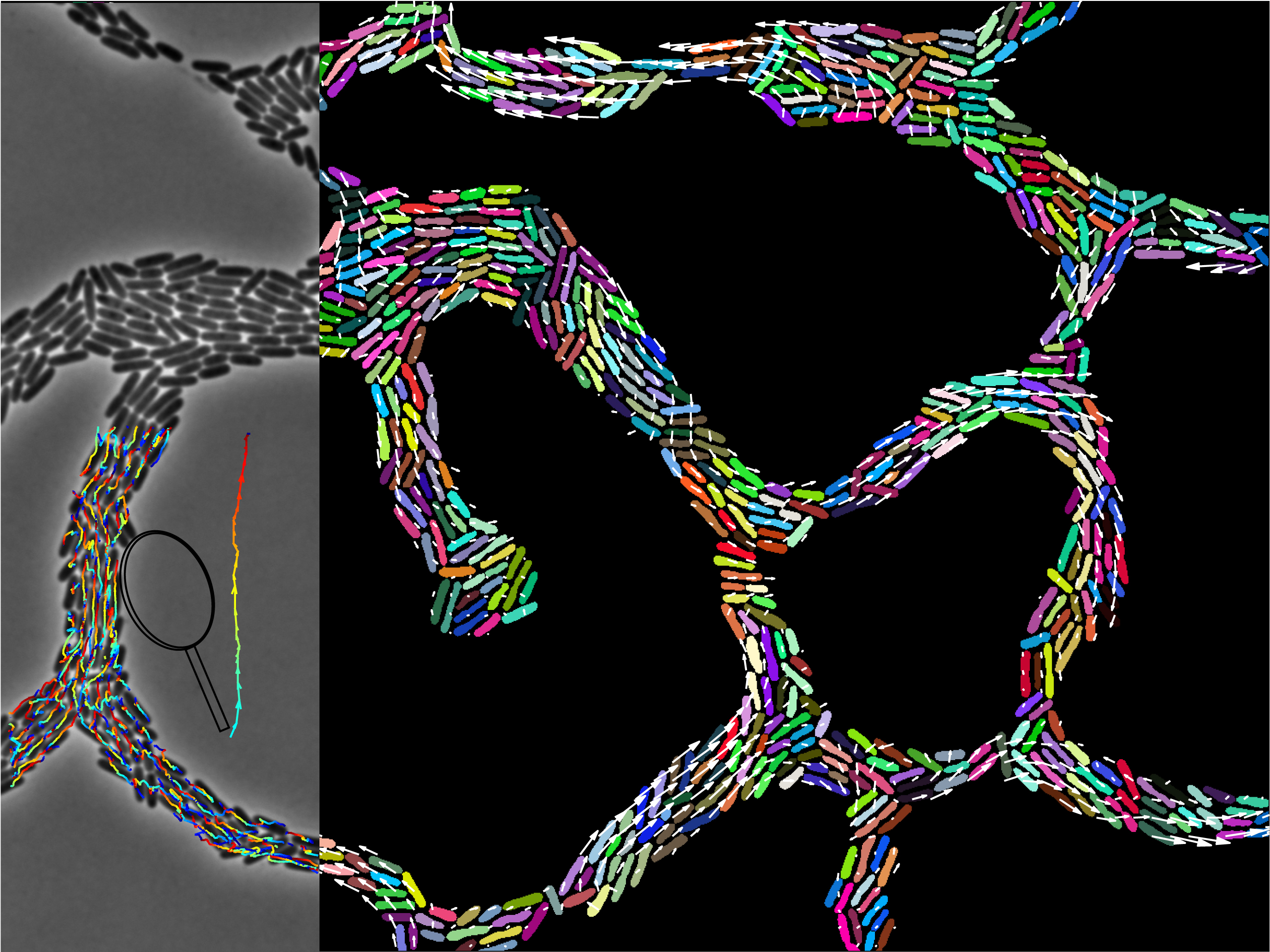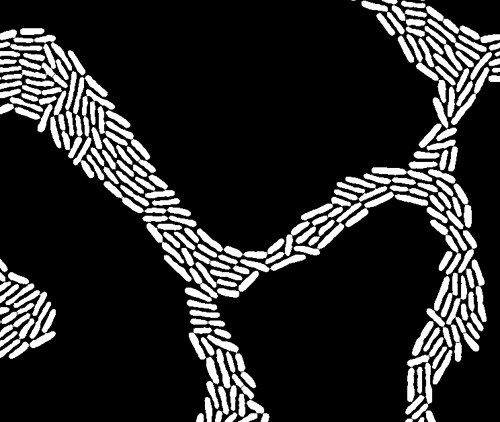Our computer vision software can track and measure the movement of bacterial cells.
By Carrie Bengston
Last week, the prestigious US journal Proceedings of the National Academy of Sciences (PNAS) published a fascinating article about . . . slime. Not just any old slime but the slime layer made by bacteria as they grow and colonise surfaces like the back of your sore throat when you have a cold, or on medically implanted devices like catheters. Our scientists have been working with UTS to determine what the slime is made of. And the amazing thing is that it contains DNA.
Most of us think of DNA as the molecules in every cell nucleus that carry the genetic codes for our blue eyes or our big feet. But extracellular DNA (or eDNA) has been found in slime that some bacteria species produce to help form a layer that grows and expands. As you can see below, all those massing bacteria gliding over slime trails look a bit like traffic on roads. The eDNA-containing slime allows new ‘roads’ to be formed and the film of bacteria to spread efficiently.
Moving bacteria – both as filmed down a microscope (grey) and as interpreted (black and white) by computer vision software.
Our role in the research was to use our computer vision techniques to translate the complex movements of swarming bacteria into a set of measurements other researchers could analyse. We used image analysis software to track the direction, speed and size of bacteria.
By forming a growing, interconnected slime layer or ‘biofilm’, bacteria are better able to resist antibiotic treatments. In the recent PNAS paper, the researchers wanted to better understand the role of extracellular DNA in biofilm development. So, they grew bacteria of a species called Pseudomonas aeruginosa between an agar gel and a transparent glass slide. They got spectacular movies of the biofilm spreading – both in the presence of extra-cellular DNA, and in its absence.
The medicine cabinet of the future could contain pharmaceuticals that target eDNA. Image: Michael Mortensen.
They found eDNA helps form the slime that guides the traffic flow. It co-ordinates the movement of the bacteria so that they move almost as one, rather than the bunch of individual cells they are. So despite the fact that DNA’s structure was announced 60 years ago, we’re still learning more about what it does today.
Future research could help us find new drugs or treatments that would target this extracellular DNA and may help to fight persistent infections. This means we can stay healthy and give those bacteria the heave-ho before they get moving.
For more information on how we’re working to keep you healthy, head to our website.




